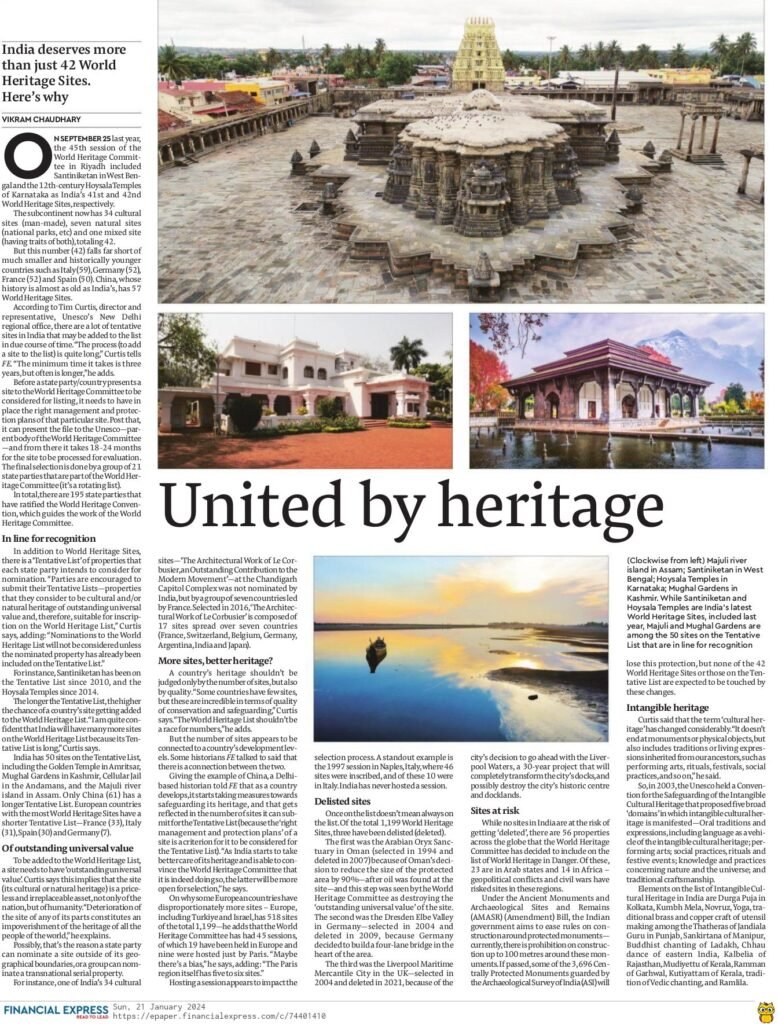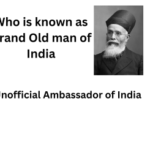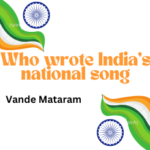Assam’s Moidam -the Mound-Burial System included in the UNESCO World Heritage list

“Moidams – the Mound-Burial System of the Ahom Dynasty” from Assam becomes India’s 43rd site on the UNESCO World Heritage List. Kaziranga National Park and Manas Wildlife Sanctuary, in Assam both inscribed under the Natural category in 1985. India became a member of the World Heritage Committee from 2021-25 and is currently hosting its first-ever session since joining UNESCO World Heritage Convention of 1972. The 46th session of the World Heritage Committee started on July 21st and will last until July 31st in New Delhi. now standing at the 6th position globally for the most number of World Heritage Properties.
LEARNING FROM HOME/ WITHOUT CLASSES/ BASICS
Here’s a look at all 43 UNESCO world heritage site in India:
- Kaziranga in Assam
- Manas Wildlife Sanctuary in Assam
- Sundarbans National Park in West Bengal
- Western Ghats. These include Agasthyamalai Sub-Cluster, Periyar Sub-Cluster, Anamalai Sub-Cluster, Nilgiri Sub-Cluster, Talakaveri Sub-Cluster, Kudremukh Sub-Cluster, Sahyadri Sub-Cluster
- Great Himalayan National Park in Himachal Pradesh
- Mahabodhi Temple Complex at Bodh Gaya in Bihar
- Churches and Convents of Goa
- Humayun’s Tomb in Delhi
- Red Fort Complex in Delhi
- Champaner-Pavagadh Archaeological Park in Gujarat
- Group of Monuments at Hampi in Karnataka
- Group of Monuments at Pattadakal in Karnataka
- Buddhist Monuments at Sanchi in Madhya Pradesh
- Rock Shelters of Bhimbetka in Madhya Pradesh
- Khajuraho Group of Monuments in Madhya Pradesh
- Ajanta Caves in Maharashtra
- Ellora Caves in Maharashtra
- Elephanta Caves in Maharashtra
- Chhatrapati Shivaji Terminus (formerly Victoria Terminus) in Maharashtra
- Sun Temple at Konark in Odisha
- Keoladeo National Park in Bharatpur, Rajasthan
- Jantar Mantar in Jaipur, Rajasthan
- Great Living Chola Temples in Tamil Nadu. They include Brihadeeswarar temple in Gangaikonda Cholapuram, Airavateshwarar Temple in Darasuram, Brihadeeswarar Temple in Thanjavur.
- Group of Monuments at Mahabalipuram in Tamil Nadu
- Agra Fort in Uttar Pradesh
- Fatehpur Sikri in Uttar Pradesh
- Taj Mahal, Uttar Pradesh
- Rani ki vav (The Queen’s Stepwell) in Patan, Gujarat
- Mountain Railways of India. They include Darjeeling Himalayan Railway in West Bengal, Nilgiri Mountain Railway in Ooty, Tamil Nadu, Kalka-Shimla Railway in Himachal Pradesh.
- Nanda Devi and Valley of Flowers National Parks in Chamoli district of Uttarakhand
- Hill Forts of Rajasthan. They include Chittorgarh, Kumbhalgarh, Ranthambhore, Amber Sub-Cluster, Gagron
- Nalanda in Bihar
- Khangchendzonga National Park In Sikkim
- The Architectural Work Of Le Corbusier in Chandigarh
- Historic City of Ahmadabad in Ahmedabad, Gujarat
- Qutb Minar in Delhi
- Victorian Gothic and Art Deco building
- Pink City in Jaipur
- The Ramappa temple in Telangana
- Dholavira, a Harappan-era metropolis situated in Gujarat
- Santiniketan, Bengal
- The Sacred Ensembles of the Hoysala
- Assam’s Moidam -the Mound-Burial System
UNESCO
In 1945, UNESCO was created in order to respond to the firm belief of nations, forged by two world wars in less than a generation that political and economic agreements are not enough to build a lasting peace. Peace must be established on the basis of humanity’s moral and intellectual solidarity.UNESCO strives to build networks among nations that enable this kind of solidarity,
Mobilizing for education: so that every child, boy or girl, has access to quality education as a fundamental human right and as a prerequisite for human development.
Building intercultural understanding: through protection of heritage and support for cultural diversity. UNESCO created the idea of World Heritage to protect sites of outstanding universal value.
Pursuing scientific cooperation: such as early warning systems for tsunamis or trans-boundary water management agreements, to strengthen ties between nations and societies.
Protecting freedom of expression: an essential condition for democracy, development and human dignity.
UNESCO is known as the “intellectual” agency” of the United Nations. Audrey Azoulay is the current director general of UNESCO.







0 Comments